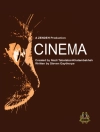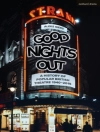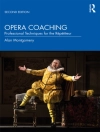A great movie’s first few minutes provide the key to the rest of the film. Like the opening paragraphs of a novel, they draw the viewer in, setting up the thematic concerns and stylistic approach that will be developed over the course of the narrative. A strong opening sequence leads the viewer to trust the filmmakers. Other times, opening shots are intentionally misleading as they invite alert, active participation with the film. In Cinematic Overtures, Annette Insdorf discusses the opening sequence so that viewers turn first impressions into deeper understanding of cinematic technique.
From Joe Gillis’s voice-over in Sunset Boulevard as he lies dead in a swimming pool to the hallucinatory opening of Apocalypse Now, from the stream-of-consciousness montage as found in Hiroshima, mon amour to the slowly unfolding beginning of Schindler’s List, Cinematic Overtures analyzes opening shots from a range of Hollywood as well as international films. Insdorf pays close attention to how the viewer makes sense of these scenes and the cinematic world they are about to enter. Including dozens of frame enlargements that illustrate the strategies of opening scenes, Insdorf also examines how films explore and sometimes critique the power of the camera’s gaze. Along with analyses of opening scenes, the book offers a series of revelatory and surprising readings of individual films by some of the leading directors of the past seventy-five years. Erudite but accessible, Cinematic Overtures will lead film scholars and ardent movie fans alike to greater attentiveness to those fleeting opening moments.
قائمة المحتويات
Preface
1. The Crafted Frame (Saul Bass, Talk to Her, Knife in the Water, Camouflage)
2. The Opening Translated from Literature (The Conformist, The Tin Drum, The Unbearable Lightness of Being, All the President’s Men, Cabaret)
3. Narrative Within the Frame: Mise-en-Scene and the Long Take (Touch of Evil, The Player, Aguirre: The Wrath of God, The Piano, Bright Star, In Darkness)
4. Narrative Between the Frames: Montage (Z; Hiroshima, mon amour; Seven Beauties; Schindler’s List; Three Colors: Red; The Shipping News; Shine)
5. Singular Point of View (The Graduate, Taxi Driver, Apocalypse Now, Come and See, Lebanon, Good Kill)
6. The Collective Protagonist (La Ciudad, 3 Backyards, Little Miss Sunshine, Le Bal, Day for Night, A Separation, Where Do We Go Now?)
7. Misdirection/Visual Narration (The Hourglass Sanatorium, Before the Rain, Ajami, Under Fire, The Conversation, Rising Sun, Psycho, The Truman Show)
8. Voice-Over Narration/Flashback (Sunset Boulevard, American Beauty, Fight Club, Badlands)
Notes
Index
Color Plates
عن المؤلف
Annette Insdorf is a professor in the Film Program of Columbia University’s School of the Arts and host of the Reel Pieces series at Manhattan’s 92nd Street Y. Her books include
Francois Truffaut (1979),
Indelible Shadows: Film and the Holocaust (1983),
Double Lives, Second Chances: The Cinema of Krzysztof Kieslowski (1999),
Philip Kaufman (2012), and
Intimations: The Cinema of Wojciech Has (2017).












